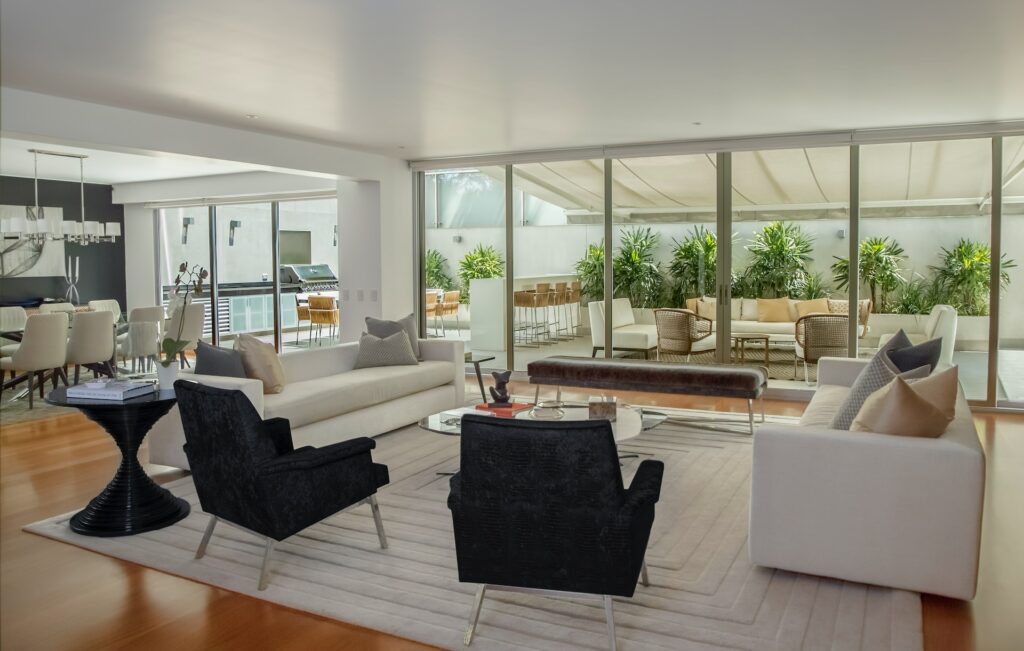Biophilia is an innate and genetically defined wavelength of humans with Mother Nature!
Biophilic design, one of the most exciting new interior trends in 2022 that has now become a movement. It’s no longer termed as a trend but a whole new international movement. It’s even being braced by an outstanding documentary feature named ‘Biophilic Design : The Architecture of Life’.
A research from the University of Vermont comes up with the facts that most people, especially women prefer going outdoors for comfort stays. The resurgence of biophilic design echoes the desire to be closer to Nature. The due credit goes to the pandemic too. Since COVID-19 knocked everyone’s door, people have been trapped inside. They understood how our homes make us feel. That’s where biophilia gets into the picture.
Architecture has a way to invoke certain feelings inside us. For instance, the concrete structures create stoic and solemn vibes. The wooden cabins and massive windows create comfortable and peaceful vibes that people have been craving amidst the global crisis. Biophilic designs include landscape architectural designs with indoor gardens, balcony gardens, green planters that lead to landscape conservation.
So, you see, biophilic design is not just a functional architecture, it’s an art.
From Trend to an International Movement
Biophilic design is gaining traction because it is a cost saving design approach. Biophilia requires an upfront investment and it pays you in the long run, both financially and environmentally. Here’s how –
The Cost of Turnover & Employee Retention
Biophilic offices are becoming common and aesthetics isn’t the only reason behind it. Biophilic offices help customers feel healthy and happy, says Peldon Rose.
Did you know that in the American Workplace Report, it was found that 70% of employees aren’t engaged at work. This cost companies billions.
Actively disengaged employees cost US $450 to $550 billions/year. Businesses are experiencing huge financial losses due to high turnover. When salaried people say goodbye to the companies, replacement becomes hefty and comes with a training cost.
Did you know, it costs 6-9 months salary to replace a salaried employee? That’s why employee retention is important.
The question is, what’s the reason behind employees being disengaged and unhappy? Research points out that poor employee well-being reduces engagement, increases overtime, increases turnover, needs overstaffing and decreases morale.
Due to this, businesses are turning to biophilic designs because it solves the issues of building-related illnesses by benefitting occupant health. The use of non-toxic and natural building materials results in a cleaner environment that supports comprehensive wellness.
Poor Indoor Environmental Quality
Indoor Environment Quality (IEQ) is one of the topmost reasons why people suffer. Lightning, air quality and damp conditions leads to a poor indoor environment quality which furthermore leads to a wide range of health conditions. Some of them include Building Related Illness & Sick Building Syndrome.
Biophilic designs and architecture support elements directly from Nature. It helps people be more creative, be more present and engaged in their work. It reduces absenteeism and turnover which in-turn can lead to financial consequences. People who stay away from Nature are more prone to sickness.
Biophilic designs promote greenery, indoor plants to naturally purify the air quality inside the buildings. As per a study, plants reduce the presence of volatile organic compounds like carcinogens and promote wellbeing.
Habitable Horticulture says that plants can drastically enhance the IAQ and create a better indoor environment. In addition to this, wood also improvises IAQ as it moderates humidity. As compared to porsche HVAC systems, incorporating wood, hanging gardens, indoor plants ensures better space and air quality that leads to improved productivity and occupant satisfaction.
WELL Certification
WELL Building Standard has completely incorporated biophilic design in its program. The objective is to make the environment universal and it won’t be long before WELL certification also becomes a norm. Buildings that have healthy qualities have higher resale value. As outlined by WELL, they command upto 20% rent premium over the market rate. This way, companies are moving towards energy-related savings by investing in great biophilic landscape architecture and designs. Many buildings have observed a 12% reduction in the energy use and 40% reduction in water consumption.
Wrapping-Up
Biophilic design might seem like a huge expense initially, however it’s important to look beyond the price tags. It’s not an expense, but an investment for sure. In the long run, biophilic architecture is designed to save money by eliminating poor occupant health along with building an environment of well-being for humans. From reduction in absenteeism, enhancing employee retention, to mitigating turnover costs and a healthy environment, there are innumerable benefits of biophilia designs. The upfront costs are quite small in comparison to the long term savings.
Biophilia is a movement that aims to spread healthy and happy vibes all around the globe!
